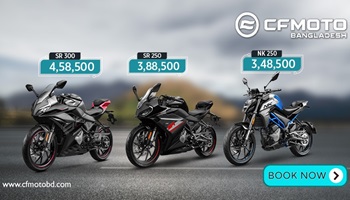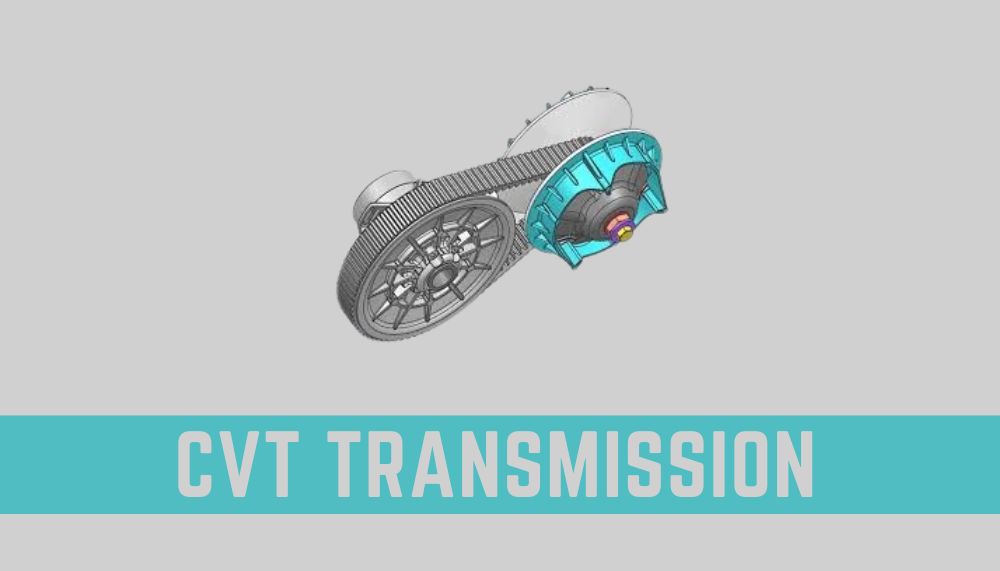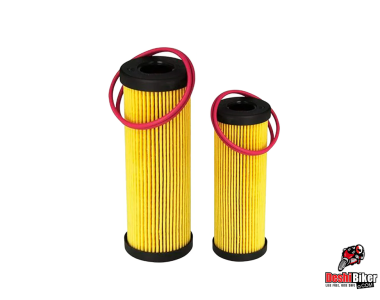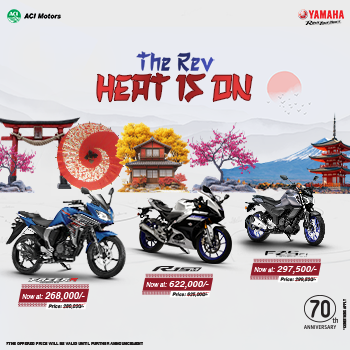What is CVT on a bike? What does CVT mean in motorcycle? How Does CVT Work in a Scooter? Is CVT better than automatic? Can CVT handle high rpm? What are 3 benefits of CVT? What is the disadvantage of CVT gearbox? What is the biggest problem with CVT transmission? Which is better, DCT or CVT? Does CVT consume more fuel? Is CVT good for long drive? This content reveals everything about the CVT Transmission in a Bike: Motorcycle or Scooter including mechanism process, advantages, disadvantages, comparison to other transmission, and more.
What is CVT in a Motorcycle?
CVT refers to “Continuously Variable Transmission”. It is an automated transmission mechanism in a motorbike. The CVT mechanism can change through a continuous range of gear ratios. In more detail, CVT lets the bikers drive a motorcycle without requiring to shift gears and also doesn’t need to engage or pull the clutch. Actually, there is no necessity for the involvement of multiple gears to alter the speed ratio. In this mechanism, pulleys are enclosed with different variable diameters where the throttle as well as the engine speed has control over the process. You can see this mechanism in a Scooter where the rider neither needs to shift gear nor requires to involve clutch.
How does a CVT work on a bike?
How does a CVT system work? There is a drive pulley with a connection to the engine shaft and a driven pulley with a connection to the rear wheel. The engine provides power to a drive pulley (connected to a crankshaft). The amount of throttle the rider provides, the engine generates a proportional amount of rotational energy. So, the drive pulley circulates at an equal speed. That means the more throttle provided, the more rotation speed for the drive pulley. Transmission provides the engine power from the rear while. A belt connects the driven pulley (located at the rear while) along with a drive pulley.
When the rider starts the bike there are low rpms during the rotation of the engine. During this phase, there is the lowest possible diameter at the drive pulley while the driven pulley will have the highest possible diameter. Hence, the bike runs smoothly despite low rpms and with a high torque. The shape of both pulleys contrasts with each other. During Drive Pulley’s shirnkest shape, the driven pulley is the bulkiest. And when the drive pulley takes the shape of the highest possible diameter the “driven pulley” shrinks.
The bike runs at a moderate speed when both pulleys are of equal shape. When the drive pulley has the lowest possible diameter the bike runs at less speed. On the contrary, when the drive pulley enlarges and has the highest possible diameter, the bike runs at the maximum speed. In fact, when the drive pulley’s diameter becomes large it rotates the rear wheel at more speed making the bike faster. So, speed is proportional to the throttle given and the diameter shape of the drive pulley.
Is CVT Good for Motorcycles?
Before determining whether CVT is good for a bike or not, let’s take a look at the pros of the CVT system.
- Offers a seamless automatic gear shifting.
- Also offers infinite gear ratios.
- Bikers can enjoy a smoother riding experience.
- Also provides various gear ratios in reverse function.
- Gears aren’t fixed.
- Comfortable and relaxed riding.
- More suitable for learners or beginners.
- The transmission process is step-less.
- Makes the bike more fuel efficient and the fuel consumption is very low.
- Keeps the engine RPMs low as well as consistent
- Unnecessary high engine speeds don’t occur
- Comes with lower manufacturing costs.
What is the Disadvantage of CVT Transmission?
Now check out the biggest problems you will face using a CVT system motorcycle.
- Delayed acceleration.
- Also features sudden loss of acceleration.
- Overheating issue.
- Torque-producing ability is limited.
- The belt system needs betterment.
- A high amount of wearing is observed.
- High rate of slipping.
- The maintenance and repair are quite difficult.
- It’s a complex process for many users and mechanics.
- Production cost is higher and hence an expensive option.
Is CVT Bad for Speed?
CVT system maintains a specific speed. It also avoids unintentional high speed. CVT is able to provide high engine performance. But often slip with high torque. But if you have a craze for speeds, then the CVT system may not be your choice. You may feel delayed acceleration and won’t get to your top speed at a fast pace, unlike the sports bikes.
Which is Better, CVT or Automatic?
Is CVT better than automatic? Let’s see some key differences between the 2 systems.
- The rider doesn’t need to input gear shifting in a CVT system.
- CVT provides the smoothest riding while Automatic transmission doesn’t.
- The automatic transmission feels a bit jerky sometimes.
- The CVT transmission is more fuel-efficient than the automatic one.
As riders prefer a smoother ride and a more fuel-efficient bike, the CVT system looks like a better option that the automatic from these perspectives.
Why is CVT Not Used in Bikes?
CVT is not common in the motorcycles. One may ask why. Let’s see actually what are the reasons that the manufacturers don’t use CVT in motorbikes.
- The gear adjustments are automatic. Hence, the rider can’t gain speed at a faster time. Hence, currently, it’s not suitable for sports bikes or bikers who require speed.
- The lack of cost-effectiveness or expenses also prevents the manufacturers from using it in commuter bikes which doesn’t need much speeding.
- Although CVTs are fuel-efficient they show evidence of more power loss than the general gear systems.
- CVT systems are likely to be heavier and more complex compared to traditional gear systems. Hence, is often avoided in the 2-wheelers which tend to be lightweight and follow a simple system.
- The target audiences and market preferences are the other factors CVT is still uncommon for the bikes.
- Actually, the CVT system is more suitable for cars or scooters that ride in congested traffic zones within the city.
Do Motorcycles Use CVT?
Yes the CVT transmission is used in some motorcycles. Apart from most scooters, you will see a “Continuously Variable Transmission” in the following bikes:
- Honda DN-01
- Aprilia Mana 850 GT
- CFMoto V5, etc.



























